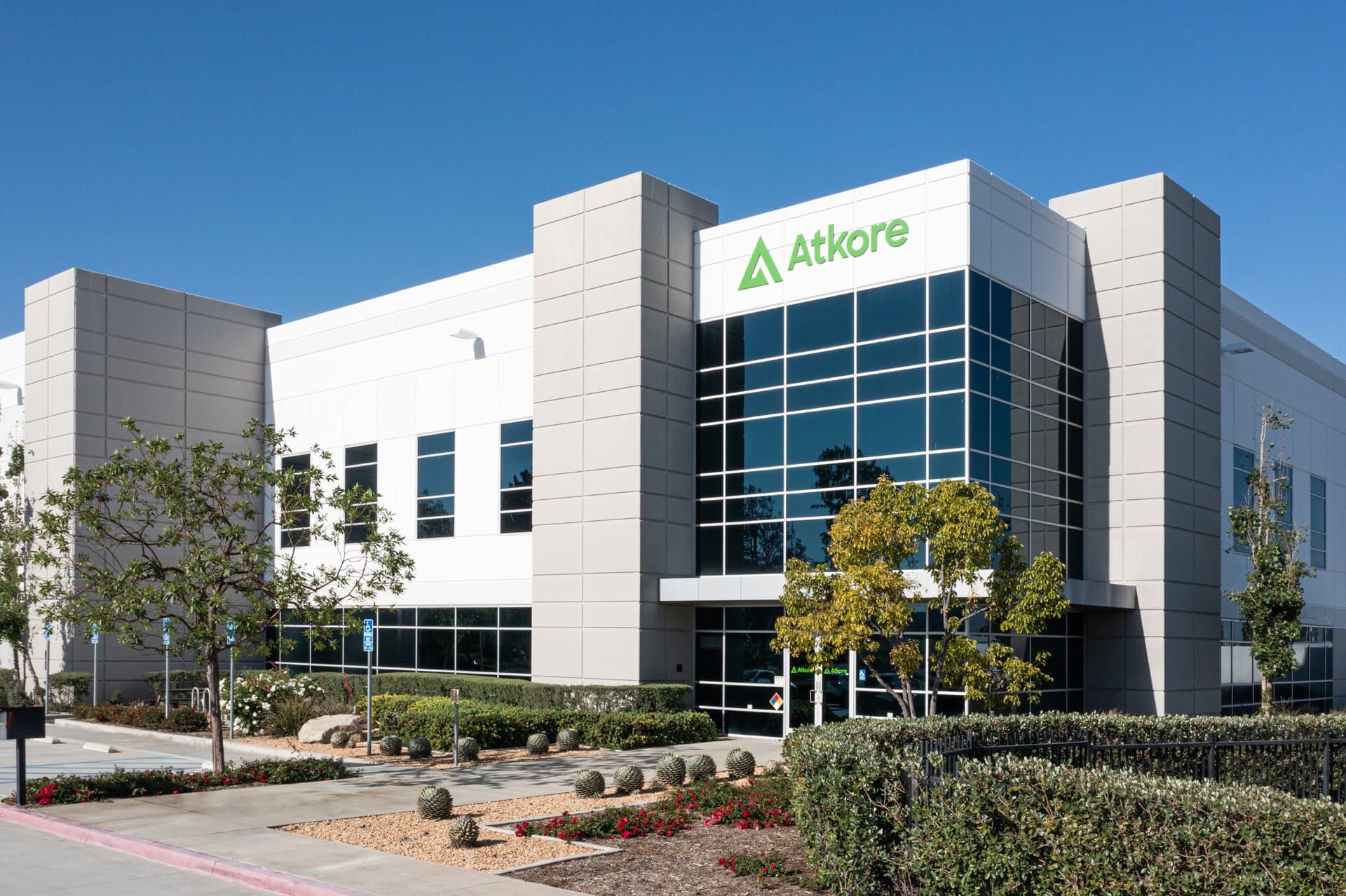Atkore Q2 2025 Results: Navigating Sales Decline with Operational Strength
Explore Atkore’s Q2 2025 financial performance, revealing steady operational execution amid a 10.6% sales drop, and uncover what this means for investors eyeing the electrical safety sector.

Key Takeaways
- Atkore’s Q2 2025 revenue fell 10.6% year-over-year to $735 million, matching analyst expectations.
- Adjusted EPS beat estimates by 3.2%, despite a sharp year-on-year decline to $1.63.
- A $127.7 million non-cash impairment on HDPE assets led to a net loss of $50.1 million.
- Operational productivity gains helped the Electrical segment increase organic volume by 5%.
- Safety & Infrastructure segment’s adjusted EBITDA surged 41.3%, showing resilience amid pricing pressures.
- Share repurchases and a 10% dividend increase signal management’s confidence despite market headwinds.

Atkore, a key player in electrical safety products, recently unveiled its Q2 2025 financials, painting a picture of resilience amid headwinds. While sales dipped 10.6% year-over-year to $735 million, the company met Wall Street’s revenue expectations, showing operational discipline. Adjusted earnings per share (EPS) of $1.63 nudged past analyst forecasts by 3.2%, even as a hefty $127.7 million impairment on high-density polyethylene (HDPE) assets cast a shadow, resulting in a net loss. The Electrical segment’s 5% organic volume growth and a 41.3% EBITDA surge in Safety & Infrastructure hint at pockets of strength. This article unpacks Atkore’s mixed signals, explores what the numbers mean for investors, and challenges myths about earnings and stock performance in cyclical industries.
Analyzing Atkore’s Sales Decline
Why did Atkore’s revenue slip 10.6% in Q2 2025? It’s a question that echoes across the electrical safety sector, where cyclical downturns have tightened the screws on many players. Atkore’s $735 million in sales matched Wall Street’s expectations, but the year-over-year drop signals challenges beyond mere market noise. Consider the Electrical segment: despite lower sales, it managed a 5% increase in organic volume, a testament to productivity improvements and operational focus. This suggests that while top-line dollars shrank, the company’s core business activities remained robust.
Yet, the broader industry headwinds—pricing pressures and delayed government stimulus impacts—cast a long shadow. The Safety & Infrastructure segment’s pricing challenges were offset by a remarkable 41.3% jump in adjusted EBITDA, highlighting management’s nimbleness in navigating tough terrain. This duality—falling sales but rising operational efficiency—reminds investors that headline revenue numbers don’t tell the whole story. Atkore’s experience underscores the importance of digging deeper into segment performance and operational metrics to understand true business health.
Decoding Earnings and Impairment Impact
Adjusted EPS is often the star of earnings reports, and Atkore’s $1.63 per share in Q2 2025 did outshine analyst estimates by 3.2%. But here’s the twist: this positive beat came amid a sharp year-on-year decline from $3.80, and a reported net loss of $50.1 million. The culprit? A one-time, non-cash impairment of $127.7 million on HDPE assets. Think of this as the company admitting some equipment or inventory isn’t worth what it once was—no cash left the bank, but the accounting hit was real.
This impairment reflects competitive technological pressures and the lingering effects of delayed government stimulus programs. It’s a reminder that earnings can be a mixed bag, where operational success and accounting realities collide. Investors often get spooked by net losses, but understanding the nature of such impairments is crucial. They don’t necessarily signal a broken business, but rather a recalibration of asset values in a shifting market landscape.
Exploring Operational Strengths
Amid the cloudy financials, Atkore’s operational story shines through. The Electrical segment’s 5% organic volume growth is no small feat in a down market, reflecting focused productivity gains and a lean manufacturing footprint. This domestic, diversified supply chain setup has helped the company stay nimble, adapting to pricing pressures and cyclical demand.
Meanwhile, the Safety & Infrastructure segment’s 41.3% surge in adjusted EBITDA to $36.1 million showcases resilience and strategic cost management. It’s like a ship weathering a storm by trimming sails and adjusting course. Management credits its dedicated workforce and operational discipline for these wins, a human element often overlooked in cold numbers. These operational strengths suggest that Atkore isn’t just surviving the downturn—it’s positioning itself for the eventual rebound.
Capital Allocation and Shareholder Returns
Atkore’s financial moves speak volumes about management’s confidence. Despite a free cash flow margin drop from 8.9% to 1.4%, the company continued rewarding shareholders with $50 million in share repurchases and a 10% dividend increase. This isn’t reckless bravado; it’s a calculated bet on long-term cash generation potential.
Share repurchases shrink the number of shares outstanding, boosting earnings per share—a tactic Atkore has used to great effect, reducing share count by 29.2% over five years. It’s financial engineering that complements operational efforts. The dividend hike adds a steady income stream for investors, signaling that the company believes in its future. These capital allocation choices offer a counterpoint to the revenue decline, suggesting a balanced approach to navigating tough times.
Interpreting Market Reaction and Outlook
The market’s immediate reaction to Atkore’s Q2 results was a 3.2% stock price drop, driven largely by the net loss from the HDPE impairment. It’s a classic case of headline risk overshadowing underlying business strength. Analysts note that while full-year EBITDA guidance was slightly below expectations, adjusted EPS guidance was raised by 3.2%, signaling operational confidence.
Trading at roughly 9 times 2024 EBITDA, Atkore’s shares may attract value investors eyeing infrastructure spending tailwinds. The company’s domestic manufacturing base, productivity focus, and shareholder-friendly policies paint a picture of resilience. For investors willing to look beyond short-term setbacks, Atkore’s story is one of steady execution amid uncertainty—a reminder that cyclical industries require patience and a keen eye for operational nuance.
Long Story Short
Atkore’s Q2 2025 results offer a nuanced tale: a company grappling with cyclical sales declines and a significant asset write-down, yet demonstrating operational grit and strategic capital returns. The 10.6% revenue drop aligns with broader industry trends, but productivity gains and segment-specific EBITDA growth provide a silver lining. Management’s commitment to shareholder value through buybacks and dividend hikes adds a layer of confidence. Investors should weigh the short-term earnings hit against Atkore’s long-term positioning, especially as infrastructure cycles evolve. The market’s swift selloff reflects sensitivity to headline losses, but beneath the surface lies a business adapting and persevering. For those willing to look beyond the quarterly noise, Atkore’s story is one of steady execution amid uncertainty—a reminder that in investing, patience and perspective often pay dividends.